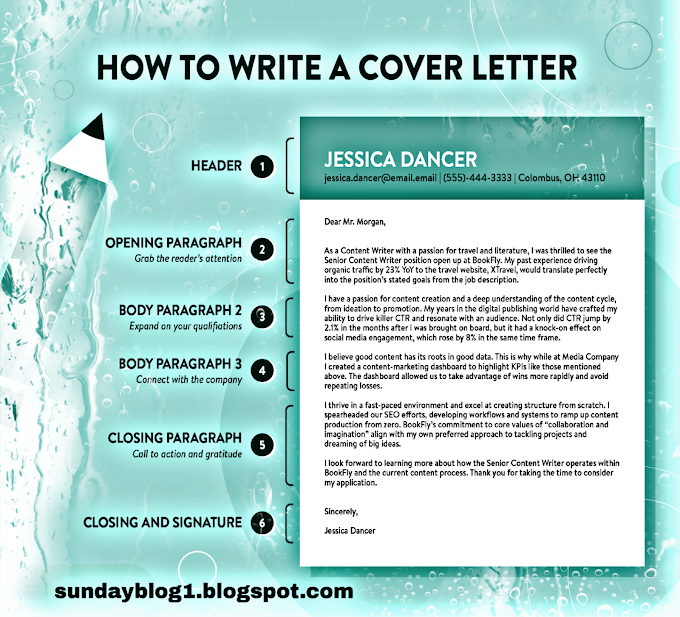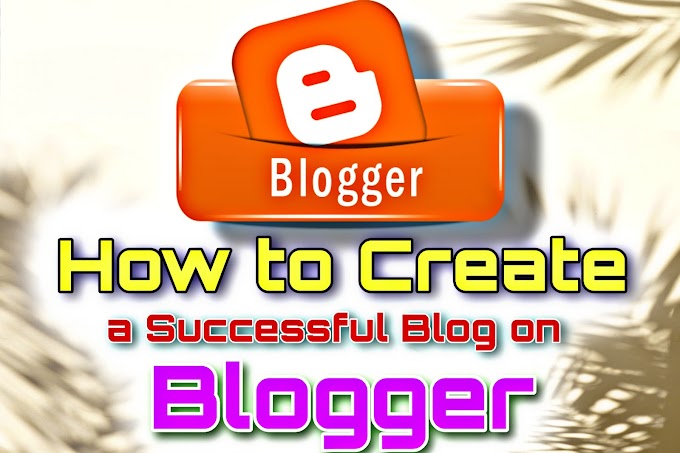Looking to improve your blog's search engine rankings in 2023? Check out these 10 proven strategies for boosting your website's SEO. From conducting keyword research to optimizing your website's content and metadata, these tips will help you get found by your target audience and drive more organic traffic to your blog. Follow these best practices to increase your search visibility and reach your goals in the coming year."
 |
| "10 Proven Strategies for Improving Your Blog's SEO in 2023" |
"In today's world, blogging is an increasingly popular way to share ideas, opinions, and experiences with a global audience. If you're planning to start a blog on Blogger.com in 2023, you'll want to make sure you set it up properly, create and publish high-quality content that is optimized for search engines, build and engage with your audience, and consider monetization options like advertising and affiliate marketing. To truly succeed as a blogger, it's also important to stay up to date with industry trends, continue learning and improving your skills, and experiment with new ideas and strategies. By following these key takeaways, you'll be well on your way to achieving blogging success on Blogger.com in the coming year and beyond."
Rank 1st on Google in 2023
I. Setting up your blog
Here are a few key points you could include in a section on setting up your blog on Blogger.com:
- Choosing a blog name and URL: Choose a name that reflects the theme or focus of your blog, and consider using a URL that includes your blog name to make it easier for readers to find you.
- Customizing your blog's design and layout: Use Blogger's built-in templates and design options to create a professional and visually appealing layout for your blog.
- Setting up essential pages: Create pages for your About, Contact, and other important information to give your readers a better understanding of who you are and how to get in touch with you.
- Adding widgets and features: Consider adding widgets and other features, such as social media buttons and a search bar, to make it easier for readers to navigate your blog and interact with you.
- Previewing and publishing your blog: Be sure to preview your blog to make sure everything looks the way you want it to, and then hit the publish button to make your blog live!
Also read 👉Blogger.com Blogging Tips for Success in 2023"|| how to rank in first page on Google in 2023.
(I) Choosing a blog name and URL
Here are a few tips for choosing a blog name and URL:
- Make it memorable: Choose a name that is easy to remember and stands out. Avoid using long or difficult-to-spell words, and consider using a play on words or a pun to make your blog name more memorable.
- Keep it relevant: Choose a name that reflects the theme or focus of your blog. This will make it easier for readers to understand what your blog is about and help you attract the right audience.
- Use keywords: Including keywords in your blog name and URL can help your blog rank higher in search engine results, making it easier for people to find your blog.
- Avoid using numbers and hyphens: These can be confusing and make your blog name and URL harder to remember.
- Check for availability: Make sure the name you choose is available as a .com domain and as a social media handle on platforms like Twitter and Instagram.
(II) Customizing your blog's design and layout
Here are a few tips for customizing your blog's design and layout on Blogger.com:
- Use a customizable template: Blogger has a variety of templates to choose from, and many of them are highly customizable. Select a template that fits the theme and style of your blog, and then use the customization options to tailor it to your preferences.
- Choose a color scheme: Select colors that match the theme and tone of your blog, and use them consistently throughout your design to create a cohesive look.
- Use high-quality images: Choose visually appealing and high-quality images to use as your header image, background image, and in your blog posts.
- Use white space effectively: Don't overcrowd your blog with too much content or graphics. Use white space to create a clean and uncluttered look.
- Test your design: Preview your blog to make sure everything looks the way you want it to and make any necessary adjustments before publishing.
(III) Setting up essential pages (About, Contact, etc.)
Here are a few essential pages you should consider setting up on your blog:
- About: An About page is a great way to introduce yourself to your readers and give them a sense of who you are and what your blog is about.
- Contact: A Contact page is essential for allowing your readers to get in touch with you. You can include your email address, social media profiles, or a contact form to make it easy for people to reach out to you.
- Privacy policy: A privacy policy page is a legal requirement if you collect any personal data from your readers, such as their email addresses. You can use a template or generate a privacy policy using a tool like the Privacy Policy GGenerator
- Disclaimer: A disclaimer page can help protect you legally by stating that the content on your blog is for informational purposes only and should not be taken as professional advice.
- Copyright: A copyright page can help protect your content by stating that all the material on your blog is your intellectual property and cannot be used without your permission.
- Archives: An Archives page can help your readers access and navigate your older blog posts. You can organize your archives by date, category, or tag.
2. Creating and publishing content
Here are a few key points you could include in a section on creating and publishing content on your blog:
- Finding inspiration for blog post ideas: Use current events, your own interests and experiences, reader feedback, keyword research tools, and other blogs in your niche to generate ideas for blog posts.
- Writing compelling and engaging blog posts: Use a clear and concise writing style, break up your text with headings and bullet points, and include images and other media to make your posts more visually appealing.
- Optimizing your blog posts for search engines: Use keywords in your post titles, headings, and throughout the body of your post to improve your blog's search engine rankings.
- Promoting your blog and its content: Share your blog posts on social media, interact with your readers through comments, and consider reaching out to other bloggers or influencers in your niche to promote your blog.
- Scheduling and publishing your posts: Use Blogger's scheduling feature to plan out your content in advance and publish your posts at the best times for your audience.
(I) Finding inspiration for blog post ideas
Here are a few strategies you can use to find inspiration for blog post ideas:
- Pay attention to current events and trending topics: Keep an eye on the news and social media to see what people are talking about and consider writing about those topics on your blog.
- Look to your own interests and experiences: Think about your hobbies, passions, and personal experiences and consider writing about them on your blog.
- Get ideas from your readers: Ask your readers what they would like to see on your blog or what topics they are interested in, and use their feedback to generate ideas for future blog posts.
- Use keyword research tools: Use tools like Google's Keyword Planner to see what people are searching for online and use those keywords and phrases as inspiration for blog post ideas.
- Check out other blogs in your niche: Take a look at what other bloggers in your niche are writing about and consider writing about similar topics or adding your own unique perspective to the conversation.
(II) Optimizing your blog posts for search engines
Here are a few tips for optimizing your blog posts for search engines:
- Use keywords in your post titles and headings: Include keywords that are relevant to your post in your titles and headings to improve your search engine rankings.
- Use keywords throughout your post: Include your keywords naturally throughout the body of your post to signal to search engines what your post is about.
- Use alt text for images: Use descriptive, keyword-rich alt text for your images to give search engines more information about your content and improve your rankings.
- Use internal and external links: Link to other relevant posts on your own blog (internal links) and to high-quality, authoritative websites (external links) to improve your search engine rankings and add value to your post.
- Use meta descriptions: A meta description is a brief summary of your post that appears in search engine results. Use a meta description to entice readers to click on your post and include your keywords to improve your search engine rankings.
- Use social media to promote your posts: Sharing your blog posts on social media platforms can help improve your search engine rankings by driving traffic to your site.
(III) Promoting your blog and its content
Here are a few strategies you can use to promote your blog and its content:
- Share your posts on social media: Share your blog posts on your social media profiles and consider using hashtags and joining relevant groups or communities to increase the visibility of your posts.
- Interact with your readers through comments: Encourage your readers to leave comments on your posts and be sure to respond to them to create a sense of community and engagement on your blog.
- Reach out to other bloggers and influencers: Consider reaching out to other bloggers or influencers in your niche and asking them to share your content or collaborate with you.
- Guest post on other blogs: Look for opportunities to guest post on other blogs in your niche to expose your blog to a new audience.
- Use email marketing: If you have an email list, use it to promote your new blog posts and drive traffic back to your site.
- Use paid advertising: Consider using paid advertising platforms like Google AdWords or Facebook Ads to promote your blog and its content to a targeted audience
3. Building and engaging with your audience
Building and engaging with your audience is an important part of succeeding as a blogger. Here are a few strategies you can use to build and engage with your audience:
- Build an email list: Use a service like Mailchimp or ConvertKit to collect email addresses from your readers and send them newsletters or updates about your blog.
- Interact with your readers through comments: Encourage your readers to leave comments on your posts and be sure to respond to them to create a sense of community and engagement on your blog.
- Use social media to interact with your readers: Use social media platforms like Twitter, Instagram, and Facebook to interact with your readers and promote your blog.
- Collaborate with other bloggers and influencers: Collaborating with other bloggers or influencers in your niche can help expose your blog to a new audience and provide new opportunities for growth.
- Host giveaways or contests: Consider hosting giveaways or contests to engage with your readers and encourage them to share your blog with their own followers.
- Create a community: Consider using a forum or discussion group to create a sense of community among your readers and encourage them to engage with each other and with you.
(I) Building an email list and newsletter
Building an email list is a great way to engage with your readers and keep them informed about your blog. Here are a few steps you can take to build an email list and create a newsletter:
- Choose an email marketing service: There are many email marketing services to choose from, such as Mailchimp, ConvertKit, and AWeber. Choose a service that meets your needs and budget.
- Set up a sign-up form: Use your email marketing service to create a sign-up form that you can add to your blog or website to collect email addresses from your readers.
- Offer an incentive for signing up: Consider offering an incentive for readers to sign up for your email list, such as a free download, a discount code, or access to exclusive content.
- Create a newsletter: Use your email marketing service to create a newsletter template and schedule when you want your newsletters to be sent out.
- Include a mix of content: Your newsletters should include a mix of content, such as updates about your blog, links to your latest blog posts, and any other relevant information or offers.
- Segment your list: Consider segmenting your email list by interests or preferences to make your newsletters more targeted and relevant to your readers.
(II) Interacting with your readers through comments and social media
Interacting with your readers through comments and social media is an important part of building and engaging with your audience. Here are a few tips for interacting with your readers:
- Respond to comments on your blog: Be sure to respond to comments on your blog to show your readers that you value their feedback and create a sense of community.
- Use social media to interact with your readers: Use social media platforms like Twitter, Instagram, and Facebook to interact with your readers, answer their questions, and share your blog posts and other content.
- Encourage readers to share your blog: Encourage your readers to share your blog with their own followers by including social media buttons or other sharing options on your blog.
- Host Q&A sessions or polls: Consider hosting Q&A sessions or polls to encourage your readers to interact with you and each other.
- Join online communities: Look for online communities or forums related to your niche and participate in discussions to connect with your readers and other bloggers.
(III) Collaborating with other bloggers and influencers
Collaborating with other bloggers and influencers can be a great way to expose your blog to a new audience and provide new opportunities for growth. Here are a few strategies you can use to collaborate with others:
- Reach out to other bloggers in your niche: Consider reaching out to other bloggers or influencers in your niche and asking them to share your content or collaborate with you on a project.
- Participate in blogger events or conferences: Look for blogger events or conferences in your area or online and consider attending to meet other bloggers and influencers in person.
- Join blogger groups or communities: Look for groups or communities specifically for bloggers and consider joining them to connect with others in your niche.
- Participate in blog hops or link-ups: Blog hops or link-ups are events where bloggers share their latest posts and visit each other's blogs. Participating in these events can help expose your blog to a new audience.
- Collaborate on a joint project: Consider collaborating with other bloggers or influencers on a joint project, such as a round-up post or a series of guest posts.
4. Staying up to date and continuing to grow
Here are a few strategies you can use to stay up to date and continue to grow your blog:
- Keep track of industry trends and changes: Stay informed about the latest trends and changes in your niche by reading industry blogs and following influencers on social media.
- Continue to learn and improve your skills: Look for opportunities to learn new things and improve your skills, whether it's through online courses, webinars, or attending conferences.
- Experiment with new ideas and strategies: Don't be afraid to try new things and see what works best for your blog. This could include experimenting with different types of content, testing different promotion strategies, or trying out new features or design elements.
- Collaborate with other bloggers and influencers: Collaborating with others in your niche can help expose your blog to a new audience and provide new opportunities for growth.
- Engage with your audience: Building a strong relationship with your readers is key to growing your blog. Be sure to interact with your readers through comments and social media and take their feedback into account when planning new content or making changes to your blog
5. Conclusion
Key takeaways for success in 2023 and beyond
Some potential key takeaways to include could be:
- The importance of setting up your blog properly, including choosing a memorable and relevant blog name and URL, customizing your design and layout, and setting up essential pages.
- The value of creating and publishing high-quality, engaging content that is optimized for search engines and promoted effectively.
- The role of building and engaging with your audience, including building an email list, interacting with your readers, and collaborating with other bloggers and influencers.
- The various monetization options available to bloggers, such as advertising, affiliate marketing, and selling your own products or services.
- The need to stay up to date and continue to grow by keeping track of industry trends, learning and improving your skills, and experimenting with new ideas and strategies.




